

The WYD ‘08 PILGRIM’S GUIDE
Be there!
So you’re heading to WYD08. Organisers and experienced pilgrims to previous World Youth Days have learned by experience (and occasionally the hard way) how to get the most out of this amazing experience. An important part of that process includes knowing WHAT - and what NOT to bring. You don’t want to find yourself tramping around the streets of Sydney lugging extra kilograms of gear that only weigh you down. As The Record’s Deb Warrier found out from talking to Perth’s WYD Office, the key is to travel light.
WHAT TO BRING TO WYD
These are some basic ideas and not an exhaustive list. Use your common sense, don’t over-pack and think of WYD as a ‘camping’ experience.

GROUP LEADERS
• Small First Aid kit
• Mobile phone (+ Charger)
• A Flag or Banner to identify your group in a crowd.
• Emergency contact details of all your pilgrims. (Medicare card numbers and guardianship permission slips for under 18s)
• Although it might sound corny, if everyone in your group wears a brightly coloured identical hat, it is much easier to find people in your group - or not to lose them.
PILGRIMS
• Sleeping Bag. Light and winter weight (rated -5 to 0 degrees Celsius should be OK)
• Travel Pillow. (Alternatives could be to use a pillow case stuffed with clothing)
• Sleeping mat
• A number of little gifts to swap - something that has Perth or your parish name on it. You can hand-make these. New friends from abroad that you make at WYD will love these. At the same time they can take a little bit of Australia back home with them.
• A beanie or something to keep your head warm (see



• A good travel backpack or suitable sized suitcase. Be prepared to carry your own luggage up stairs.
• Layers for your winter clothes and warm gloves.
• Bring polyester clothing. Polyester dries quicker.
• Good closed in water proof walking shoes – wear them in before going to Sydney.
• Small padlocks to lock your bag(s).
• Bring a packet of tissues or a roll of toilet paper [Remove the cardboard roll -makes for easier packing] Keep these in your day backpack for the port-a-loos
• Bathers and thongs – for the showers.
• A travel towel
• Photo identification for use at the airport to get your plane tickets. Passport or driver’s licence is acceptable.
• Your Parish/Group t-shirt. (see Perth WYD Merchandise)
• Own personal toiletries, medications needed or special dietary foods needed.
• Small AM/FM radio for the telecast of translation for large events (not everything will be in English)
• A good waterproof winter jacket (see Perth WYD Merchandise)
• Your WYD08 Itinerary and registration details, Travel Insurance details and copies of these.
• Small Torch.
• Your preferred means of contacting home (phone cards, etc.)
• Money (credit cards, debit cards, cash)
Non-Essentials:
• Binoculars, Camera, Batteries, Memory Sticks. FOR THE VIGIL SLEEP OUT
Note: Your main luggage will be secured at the accommodation for the two days. Only a smaller pack needs to travel with you to the sleep out.
• Tarpaulin or other ground sheet.
• Light weight sleeping bag (Winter weight – possibly bring a silk liner to keep you a little warmer)
• Clothes: Generally you will sleep in the clothes you wear for the walk. (If bad weather is forecast, bring a spare change of clothes in a plastic bag)
• ‘Wet ones’ wipes or similar products to clean your hands before eating. ‘Aquim’ Antibacterial lotion is also good for this.


• ‘Shower in a can’ – Deodorant if you are conscious of your body odour.
• A bottle of water for the walk. Despite it being winter, you will still need hydration.
• Thermal underwear (top and pants). Excellent for most trips - light, warm (even when wet), dries quickly and comfortable.
SNACKS / ENERGY FOOD
• Dried fruit
• Chocolate
• Muesli bars. Almost essential.
• Sweets, for example glucose lollies like snakes
WHAT NOT TO BRING ‘H
eavy luggage - or anything you can’t carry yourself. Travel light, travel light, travel light.
• Large suitcases that you cannot lift on your own or carry up stairs on your own.
• Tents with tent poles/pegs for the sleep out. You will only need a sleeping bag because there will not be enough room for tents.
• Valuable items eg. jewellry. You will be in communal accommodation and your personal belongings won’t always be secured.
GENERAL TIPS ON PACKING:
You can only carry a maximum of about 30 per cent of your body weight. We recommend no more that 25 per cent of your body weight. The best thing to do is reduce the weight as much as you can. In general, if you think you can do without something then leave it out. When packing, try to place most of the weight at the bottom of the pack near to your back. Put items that you may need to access quickly (eg. water, sunscreen, snacks, rain jacket) in easy-to-reach pockets or (if that isn’t possible) at the top of the main section of the pack. Also, try to pack so that your legs share the weight equally - otherwise the pack will pull you over at every step. Check the weight restrictions for your airline ticket to ensure your baggage is not overweight.
PREPARATION - FITNESS
• By now you should have started a walking campaign by walking 20 minutes 2 to 3 times a week, increasing by 5 minutes per week. When you get there, you’ll walk a lot.
• Try walking on a variety of terrains, surfaces, hills and valleys (eg. get off the footpath).
WHERE TO PURCHASE TRAVEL GEAR
The following stores are where you will find items such as 60-70L backpacks, sleeping bags, thermals, and other travel gear required for the Pilgrimage. (The staff at these stores usually know their stuff, and so may be able to give you additional advice/tips on packing.) Check the White Pages or Yellow Pages for the store that’s closest or most convenient for you:
• Main Peak • Army Surplus Stores • Kathmandu
• Midland Army Navy Disposals
• Paddy Pallin
• Wellington Surplus Stores
• Mountain Designs • Ranger Outdoors (previously known as Ranger Camping)
-
compiled by Deb Warrier
Students grill our bishops
■ By Anthony BarichWOMEN priests, contraception, miracles and favourite footy teams were among the hundreds of issues that Perth students asked Archbishop Barry Hickey and his Auxilliary Bishop Donald Sproxton during a live webcast to launch the annual LifeLink Appeal last week.
The exercise of answering live by webcast questions emailed to the bishops that has been done since 2001 draws students into the Catholic family, the Archbishop said, and teaches them about the faith and how to live it.
“It binds them closer to the Church, and we believe there is something valuable for students to speak to bishops who they might otherwise not get the chance to meet,” he told discovery.
LifeLink Day seeks to increase students’ understanding of the Church’s response to people in needs within the community; instill a sense of responsibility to those less fortunate; provide education on how LifeLink social service agencies assist 35,000 WA families and individuals annually; and encourage a “practical demonstration of faith” by fundraising for LifeLink.
The Archdiocese hopes to raise $65,000 in total from schools by December 31. Last year $61,098 was raised to support the 13 Church social support agencies like i.d.entitywa, the Emmanuel Centre,

Cross Roads, Shopfront, Catholic Migrant Centre and Day Dawn Hope centre, among others.
Along with gaining a greater understanding of the Church’s stances on pressing issues like euthanasia, the students gained an insight into the personalities of Perth’s bishops, with Archbishop Hickey revealing that if he weren’t a priest he’d like to present classical music on the radio.
Upon being asked by a Santa Maria student, the Archbishop also sang for the students live, prompting another student to ask how he come he has such a beautiful voice… though he said he doubts he’d get very far on Australian Idol
One student even caused red faces when, observantly, she asked why the cross around Bishop Sproxton’s neck was bigger than Archbishop Hickey’s cross. The Archbishop, grinning, reminded them of a “secret”: that he has other crosses bigger than the bishop’s.
Archbishop Hickey later told discovery that keeping things lighthearted hopefully made it easier for the students to relate to them and be open to asking questions.
When asked what made them want to become priests, the Archbishop said he always wanted to be priests , but Bishop Sproxton said a priest inspired him in his high school years.
Meet James Morrison, my main man: Konrad
FORMER Bunbury Catholic College student Konrad Paszkudski has won the prestigious James Morrison Scholarship, a national scholarship awarded to the best Jazz musician on any instrument.
In a grueling selection process, the best six musicians are personally selected by James Morrison from an audition CD.
The final six then attend the ‘Generations in Jazz’ Festival in South Australia where they play with James Morrison and perform both planned and impromptu pieces over a weekend.
The winner is finally announced on the Sunday afternoon. Konrad has made it to the final six three times and so was delighted to finally take home the main prize of $10 000. He is also the first ever pianist to take out the Scholarship over the twenty year history of the event.
It is the priceless opportunities that come with the Scholarship that really have Konrad excited. The Scholarship means that Konrad is invited to play with James Morrison and his bands on a regular basis throughout the next year.
Shortly he will be performing at the renowned Jazz venue, ‘The Basement’, in Sydney with James Morrison.
He will also attend the Tokyo Jazz Festival under a sponsorship arrangement with Yamaha who have also endorsed him which

Awesome: Konrad performs with jazz legend James Morrison.
means they provide him with instruments wherever he tours.
“It feels great to have won the Scholarship and it’s about time! I am really looking forward to playing with James and would love to get the job permanently,” says Konrad, who heads to New York at the end of the year to study with famous Jazz pianist Benny Green for a couple of months.
Konrad left home and Bunbury Catholic College at 15 when he was accepted into the West Australian Academy of Performing Arts to study for a Bachelor of Jazz Music which he completed at the end of last year aged 19 - the time when many teenagers are just starting a degree.
“Konrad really started music lessons when he began at BCC in Year 8. His two teachers at BCC were Fedora Taylor who taught him Classical Piano and Bill Curtis who taught him Jazz,” says his father George, who still teaches at BCC.


June 2008 THE YEAR OF PAUL June 2009
He was the early Christian Church’s most energetic persecutor who became its greatest missionary, an extraordinary figure who did more than anyone else to build the embryonic Church and spread the news that Jesus Christ had risen from death. To mark the second millenium of this astonishing persecutor-turned-saint’s birth, Pope Benedict has declared a special year of St Paul, inviting everyone to learn more about Jesus from the man who met him after he died on the Cross - and changed the world.
SOMEONE should make a movie about him - his conversion is probably the most famous in history: the young Jewish religious zealot who regarded Christ as an imposter precisely because he had died on the Cross and who carried letters from Judaism’s highest authorities authorising him to see that sentences of execution were carried out against the first Christians, the encounter with Christ on the road to Damascus, the three days of blindness, the understandably deep suspicion of Christians when he claimed he was now one of them.
In one of the most memorable scenes from the Acts of the Apostles he is reported as being present to ensure that the first martyr, a young deacon called Stephen, was stoned to death by other Jews for the blasphemy of insisting Christ was the son of God. It was at Saul’s feet that the executioners laid their clothes to more easily throw the stones that would kill him.
And yet it is precisely the religious fervour with which he hunted down, arrested and persecuted the first Christians that turned him into the single greatest missionary force in the early Church, leading Paul (his new Christian name) on some of the most memorable journeys across huge distances for the rest of his life until his eventual execution in Rome in about 65-67AD.
What is believed to be his tomb has recently been rediscovered and excavated (see photos, Page 5) by archaeologists keen to discover more about Christianity’s earliest and greatest missionary.
Now, together with their brothers and sisters around the world Perth Catholics young and old have the chance to gain a rare favour, a plenary indulgence (basically the writing-off of all punishment for sin) by visiting specially nominated churches around the Archdiocese to celebrate the Year of St Paul.
The Pauline Year called by Pope Benedict XVI runs from June 28 this year to June 29, 2009 and has led Archbishop Barry Hickey to issue a special Pastoral Letter (see other article, this page) setting out
PAUL OF TARSUS

No-one need miss out on plenary
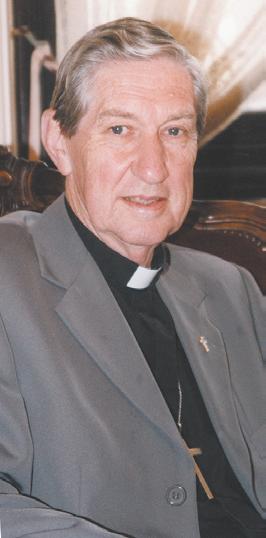
MTo mark the occasion of the special Pauline Year Archbishop Barry Hickey has issued a Pastoral Letter.
y dear people, Our Holy Father, Pope Benedict XVI has decreed the observance of a Pauline Year to commemorate two thousand years since the birth of St Paul. The Jubilee year will commence on June 28, 2008 and conclude on June 29, 2009.
The principal liturgical focus will be on the Basilica of St Paul in Rome. This Roman Basilica has a local connection, in that the great missionary and evangeliser, Bishop Salvado, died at the Monastery of the Basilica on 29 December 1900.
Pope Benedict is encouraging observance of the Pauline Year in local churches.

After surviving shipwreck, snakebite, angry mobs bent on killing him for blasphemy and a host of other remarkable events Paul is believed to have been executed by being beheaded somewhere along Rome’s Appian Way.
Under house arrest for the last few years of his life, he wrote some of the most remarkable of his letters to the converts and newlyformed Christian communities he had established in his missionary travels. Reflecting the mind of an educated Jew fully conversant with Scripture and all the prophecies relating to Christ, Paul’s letter
brought a level of sophistication to Christianity’s outreach to the world that still make them among the most popular of Christianity’s foundational documents; one passage on love is one of the most widely used during Christian weddings.
Archbishop Hickey has encouraged all to read Paul’s letters more extensively. “We listen to St Paul at Mass all the time, but are not often encouraged to go home and read the whole letter that the reading came from,” he told discovery. He encouraged Perth Catholics to read the Acts of the Apostles – the account of the movement and growth of the early Church and the struggles the Apostles encountered as they spread the Word of God.
Those not in Rome can gain a Plenary Indulgence on the commencement and conclusion dates if they devotedly participate in a religious function or pious exercise held publicly in honour of St Paul on June 29, 2008 and on June 28, 2009.
In addition, for the Archdiocese, I designate the following churches and additional days for the Plenary Indulgence to be gained on June 29 2008, January 25, 2009 and June 28, 2009.
• St Paul’s Church
104 Rookwood St, Mt Lawley
• Sts Peter and Paul Church, Redemptorist Monastery, Vincent St, North Perth
• St Joachim’s Pro-Cathedral, Shepperton Road, Victoria Park
• St Simon Peter Church,
indulgence
Prendiville Ave, Ocean Reef
• Basilica of St Patrick, Adelaide St, Fremantle
• St Jerome’s Church, cnr Rockingham Rd and Troode St, Munster
• St Joseph’s Church, cnr Gordon & Wellington Sts, Northam
• St Mary’s Church, cnr Brockman & Porter Sts, Kalgoorlie
The sick and those unable to leave their homes may gain the indulgence if they spiritually unite themselves to a Jubilee celebration in honour of St Paul, offering their prayers and suffering to God for the Unity of Christians.
The usual conditions for obtaining a Plenary Indulgence apply. They are:
1. Praying the Lord’s Prayer and the Creed, cleansed by the Sacrament of Penance and nourished by Holy Communion.
2. Prayers for the intentions of the Holy Father.
A Plenary Indulgence may be gained once per day and may be applied to self or the deceased.
All Christ’s Faithful may see the observance of the Pauline Year as an opportunity to pray, study and meditate on the life and teachings of St Paul especially by pious and reflective reading of the Acts of the Apostles and the Pauline Letters of the New Testament.
The priests of the designated churches have been requested to offer special prayers and devotions in honour of St Paul and to have times for the celebration of the Sacrament of Penance on the additional days when the Plenary Indulgence may be obtained.
May the observance of the Pauline Year lead to a greater appreciation of St Paul and to the unity of Christians.
The Apostle Paul was born in Tarsus of Galilean parents and was given the Hebrew name Saul and the associated Latin name Paul.
He was trained in making mohair for tents, but at an early age was sent to Jerusalem to study in the school of the famous Rabbi Gamaliel.
He is next heard of as a young man at the stoning of the first martyr, St Stephen.
He was on his way to Damascus in pursuit of further persecution of Christians when Jesus appeared to him and called him to conversion. He was baptised in Damascus.
Paul preached for a while but then withdrew to Arabia, returning eventually to Damascus, but was forced by the Jews to flee. He spent 15 days at Jerusalem with St Peter and returned to Tarsus, with nothing heard about him for 5 or 6 years.
Barnabas located him and the two spent a year in Antioch, preaching very successfully, before returning to Jerusalem with alms for the community there.
His main Apostolic work covered the years 45 – 57 and involved three main journeys.
The first covering at least three
2008 THE YEAR OF PAUL June 2009
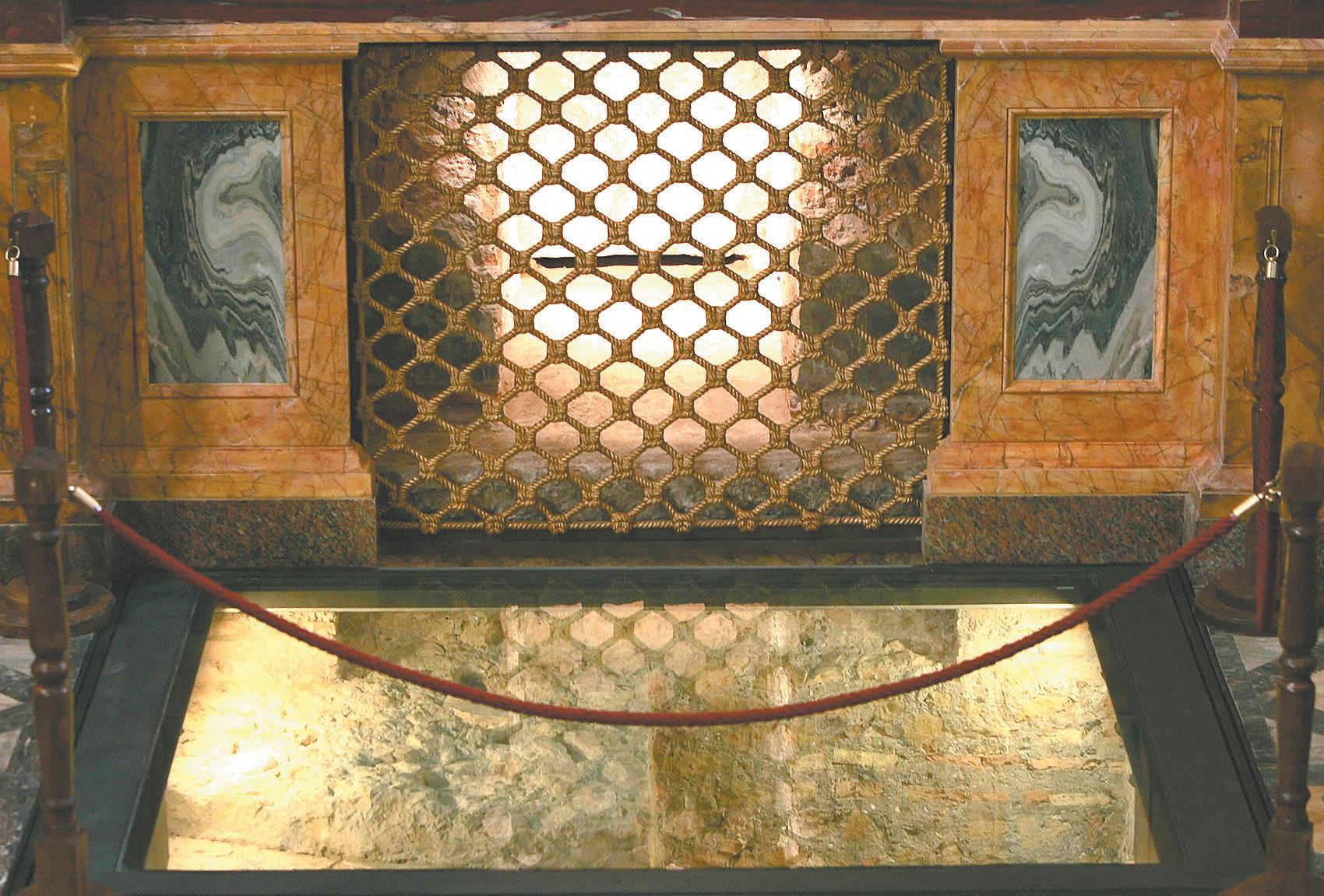

years involved going with Barnabas to Cyprus and then Asia Minor, taking in Perge, Antioch, Iconium, Lystra (where he was stoned by the Jews and left for dead), Derbe and back to Antioch. From there he went to Jerusalem for the meeting of the Apostles which overrode the need for circumcision and other aspects of the Law of Moses.
The rules that were imposed were imposed in the name of the Holy Spirit, not the Mosaic law.
The second journey saw Paul and Silas go to Antioch, Tarsus and Derbe and then overland to Macedonia where they spent 18 months preaching to the Greeks at Athens and Corinth before returning to Jerusalem and finally Antioch.
His third missionary journey was through Galatia and Phrygia to Ephesus where he spent 2 1/2 years before returning to Macedonia and then to Corinth.
Following his arrest, he spent 2 years in captivity under Governor Felix before a replacement, Festus, sent him to Rome for trial. He was shipwrecked at Malta, but eventu-
ally reached Rome where he spent two years preaching. He may have gone to Spain before returning to the churches he had founded in the East. He was arrested in Troas and again sent to Rome where he died and was buried at about the same time as St Peter, a tradition which is the origin of their sharing the same feast day, June 29.

Notre Dame appoints 39-year-old as new leader
The University of Notre Dame’s Celia Hammond becomes successor to outgoing Catholic education giant Peter Tannock
■By
Paul GrayA LAWYER who is also a 39year-old mother of three has been appointed to replace Peter Tannock as Vice Chancellor of University of Notre Dame.
Professor Celia Hammond has worked in private legal practice in Perth as well as in senior administrative and teaching positions at Notre Dame, including as Deputy Vice Chancellor.
She is the daughter of the former Chief Judge of the District Court of Western Australia, Judge Kevin Hammond.
Her appointment as Vice Chancellor of the Notre Dame was announced late last month.
In an exclusive interview with The Record before the announcement was made, Prof Hammond told of her passion for Catholic education and the unique mission she sees for a Catholic university.
She said Catholic universities provide higher education and learning as other universities do, but a Catholic university delivers this “within the context of Catholic faith and values.”
The new vice chancellor said a Catholic university provides a strong focus on knowing each individual student in its care, and on respecting each one as an individual.
A Catholic university like Notre Dame has a strong pastoral care
in-brief

program which caters to the whole person, not just to their academic needs, Prof Hammond said. Prof Hammond says the idea of a Catholic university may still seem
Students flock to low-tech College
Imagine a college where television and mobile phones are banned and where the internet can only be accessed through an on-campus computer lab. Would anyone want to go there? The answer has already been provided by a new university in Wyoming, USA, where the first 34 students have just completed final exams and all seem determined to come back for more.
More art of conversation, more wilderness and horseriding experiences, more of the great books program on which the curriculum is based, more Latin immersion classes, more learning how to think, and more of the spiritual tradition offered at Wyoming Catholic College. Students interviewed by the local newspaper clearly found it a breath of fresh air. “This is the first time in my life I’ve actually felt like I learned something,” said one. The 35 places for the next freshman intake have been filled from 80 applicants.
In an era when technology is king, the college is positing an against-the-grain conviction: that great advances in technology, while widely celebrated, might not in fact be good for people and might get in the way of education.
Says Mario Coccia, the school’s director of admissions, “A lot of education today is really job training, but the general education of students is neglected - teaching how to think, how to communicate, how to problem solve, how to learn, how to be a leader. Somebody who knows how to do these things, and to think on his feet, can excel at anything.”
- Casper Star Tribune, May 10. For the whole of the Tribune’s great report, go to the College website (yes, they have one! Can you find it?)
new in Australia, but there is a long history and tradition of Catholic universities.
Many secular universities started off as religious institutions, she said.
Another distinctive way in which Notre Dame projects Catholic values into the world is by insisting on philosophy, theology and ethics as core subjects in the curriculum undertaken by all students in every faculty. Prof Hammond is interested in all three of these areas, though she modestly professes no special expertise in any one of them. She has served on two hospital ethics committees, at St John of God and Mercy Hospitals.
Bringing the examination of ethics into the lectures on law which she has delivered to Notre Dame students has been one of the most rewarding features of her time at the university, she says.
Because of the university’s Catholic environment, it was possible to teach the law to students and then hold sessions with them asking questions about what is ethical. “It was liberating.”
While she continues to pursue an active interest in ethics, her reading on the topic is “for breadth” rather than in any specific area.
Prof Hammond says she was attracted to law and teaching as a young woman because of parental example: her father, a lawyer and judge, and her mother a teacher.
“At first I wanted to be a teacher, but I also loved logic and reasoning.” In law, she thinks, the arts of logical argument and reasoning are not used simply for argument’s sake, but to help solve problems and help people.
She says there has been a distinct Catholic contribution to the development of law, citing Saints Thomas Aquinas and Thomas More as examples of significant contributors.
She says she is looking forward to an international ethics conference hosted by Notre Dame at
its Sydney campus next month at which Catholic legal thinkers such as John Finnis will speak.
Married with three young boys, Prof Hammond says she is able to manage a full-time job with the demands of being a mother because of a lot of support.
“I fit in everything in the way everyone does,” she says. “People have been doing it for years.” She says she has enjoyed great encouragement from her family – her husband Simon King is “proud and supportive” of her appointment as Vice Chancellor – and the environment at Notre Dame has been helpful too.
Now in her 11th year of employment at Notre Dame, she says she feels like she has “grown up” in her professional life at the university – and the university also supported her in having her children, all three of whom were born since she started there.
Coming to Notre Dame in 1998 felt like “coming home” after working in private practice and lecturing at secular universities, she says.
The Catholic university is mission-focused, with a feeling among its people that everyone is headed towards the same goal.
She says the university is “not utopia” – no working environment is – but when you work at a Catholic university you “sense you were doing something higher than just doing something for yourself.”
Prof Hammond succeeds Dr Peter Tannock who will retire as Notre Dame’s Vice Chancellor on July 31. Dr Tannock said after the announcement that in Prof Hammond, the University had found a person of outstanding ability with a deep understanding of, and commitment to, Notre Dame and its objects.

Scholar, pastor, enigma: this German pope defies easy caricature. Aussies will get their first chance to assess him in Sydney in July at World Youth Day
Who is this guy, anyway? and what makes Joseph Ratzinger tick?
■ By John ThavisAustralians will soon have their first close-up encounter with Pope Benedict XVI, a figure who, in the minds of many, is still coming into focus. Some view him as a vigilant pastor, one who has used virtually every medium possible - books and speeches, sermons and encyclicals - to guide Catholics back to the essential message of Jesus and the Gospel.
Others see the German Pope as a doctrinal overseer, policing the Church’s moral boundaries on issues like end-of-life medical care, marriage and homosexuality.
For many non-Christians, Pope Benedict is an enigma, a man who has visited a mosque and prayed toward Mecca with his Muslim host, yet who repeatedly speaks about the need to proclaim Christ as the unique saviour for all people. He is hailed as a liturgical hero by traditionalist Catholics for having widened possible use of the Latin Mass.
At a more basic level, the millions of Australians who do not follow church news very closely may know Pope Benedict simply as a soft-spoken bookworm who likes cats and plays classical piano. The “real Benedict” no doubt has some elements of all these partial portraits, but in a combination that defies easy caricature. This is a pope who brings depth of thought to every word or action, in ways that are not entirely predictable.
He once described heaven as “plunging into the ocean of infinite love,” has called saints the real revolutionaries, and compared receiving the Eucharist to nuclear fission - a “chain of intimate explosions of good over evil in the human heart.”
Such philosophical and theological flourishes are not uncommon and are sometimes dropped into his talks off the cuff.
Improvising a sermon at a Rome parish, he once said the absence of God from today’s world was forcing many men and women to seek new forms of “anesthesia” in order to deal with the resulting fear and emptiness.
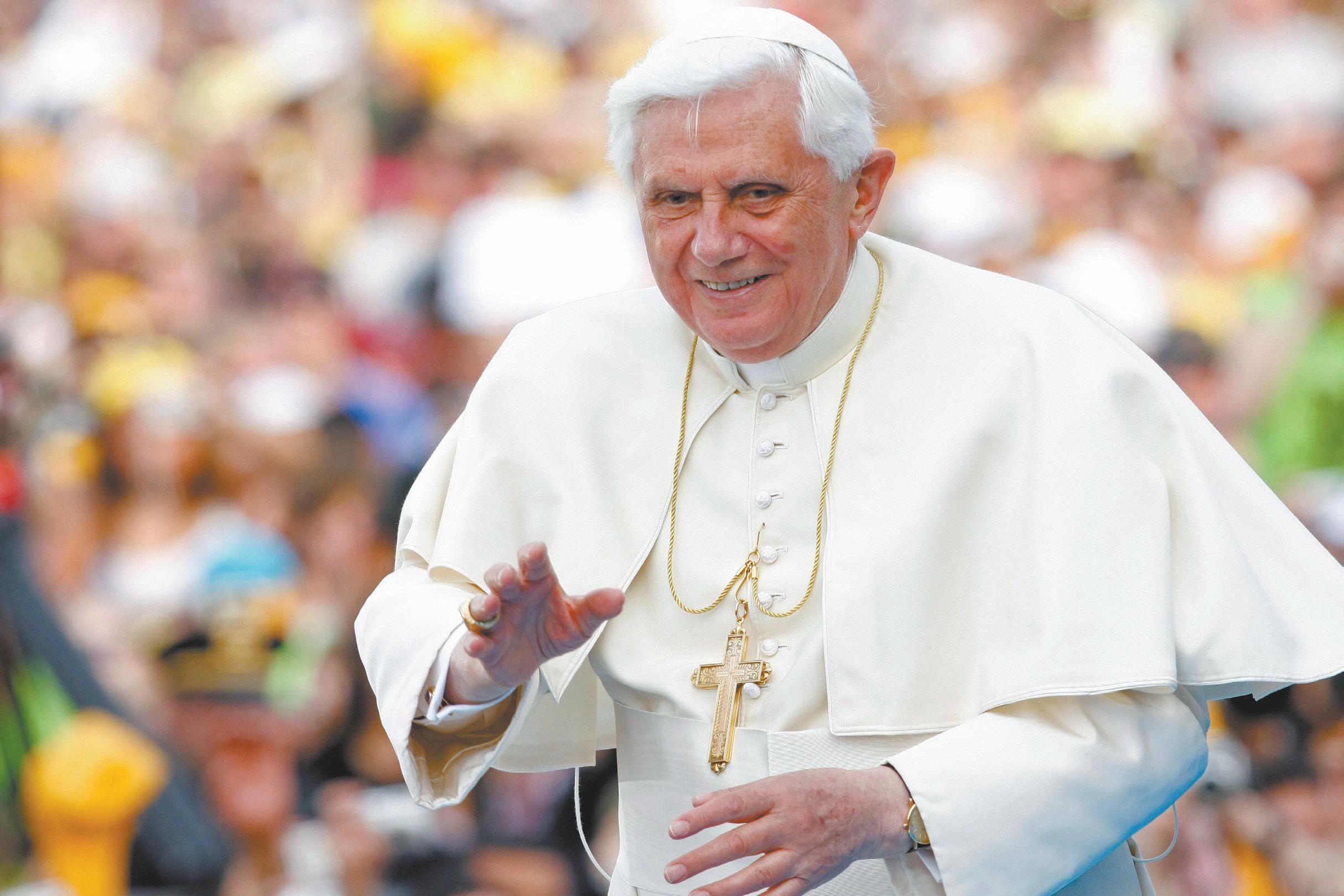
listener, one who rarely forgets what he’s told. Jesuit Father Joseph Fessio, who studied under the future pope in the 1970s, says “He has an amazing power of retention. He reads an enormous amount. Still, I don’t know how he does it.”
Path to the Papacy
Visiting the US recently, Pope Benedict celebrated the third anniversary of his election. As inevitable as that event seems in retrospect, his path to the papacy was long and indirect.
Joseph Ratzinger was born on April 16,

That touched on what has become a central theme of his pontificate: that when modern society tries to do without God it opens the door to the exaltation of science and technology, economic selfishness, ideological excess and misuse of freedom.
With equal force, he has maintained that religion cannot sever its links to reason without slipping into fanaticism.
US author and scholar George Weigel said Pope Benedict has thus taken aim at the two great problems defining international public life in the early 21st century: religious faith that rejects reason and reason that has lost faith in itself.
“Irrational faith - faith detached from reason, from an understanding of God as a creator who imprints his reason on his creation - leads to a situation in which people believe that God commands them to do the irrational; the result is a great hole in lower Manhattan and 3,000 deaths,” Weigel told CNS.
On the other hand, he said, Western culture has experienced a “loss of faith in reason,” a diminished sense that reason has the capacity to arrive at the truth.
“This notion that there may be ‘your truth’ and ‘my truth’ but nothing we recognise as ‘the truth’ makes it very hard for the West to make the case for civility, tolerance and religious freedom in the face of irrational faith,” Weigel said.
Those two points were the subject of the Pope’s address in Regensburg, Germany, in 2006. Among Muslims, the speech initially provoked an uproar, but eventually has led to a major new dialogue initiative between the Vatican and Islamic moderates.
Those who have worked with the Pope through the years say he is, in fact, a good
1927, in the Bavarian town of Marktl am Inn, the third and youngest child of a police officer, Joseph, and his wife, Maria. Joseph joined his brother, Georg, at a minor seminary in 1939. In a revealing memoir, he recalled how difficult it was to go from the “childhood world of my own” to sitting in a study hall with 60 other students. He was the smallest boy in his class and found the daily sports activities a “true torture.”
Like other young students, he was automatically enrolled in the Hitler Youth program, but soon stopped going to meetings. As World War II raged, he was conscripted into the army. In the spring of 1945, with the war ending, he deserted his unit and returned home. When the US military arrived, he was arrested with others who had served in the German army and placed in a prisoner-of-war camp for a few months.
He returned to the seminary late in 1945 and was ordained six years later, along with his brother.
In a meeting with young people in 2006, the Pope said witnessing the brutality of the Nazi regime helped convince him to become a priest. But he also had to overcome some doubts, he said. For one thing, he asked himself whether he “could faithfully live celibacy” his entire life. He also recognised that his real leanings were toward theology and wondered whether he had the qualities of a good pastor and the ability “to be simple with the simple people.”
The future pope’s life as a parish priest was, in fact, a short one. He was assigned for nearly a year to a Munich church, then began teaching theology. In 1953, he received a doctorate in theology, writing his thesis on St Augustine, and went on to teach at universities in Bonn, Munster, Tubingen and Regensburg.
At the 1962-65 Second Vatican Council, a young Father Ratzinger made important contributions as a theological expert, particularly in the debate on the sources of revelation. He embraced the council’s early work and its bold approach to renewal, but began to have misgivings in later sessions.
In particular, he warned of an emerging anti-Roman bias and the idea of a “Church from below” run on a parliamentary model. He also worried that Vatican II might have made theologians feel as if they were no longer subordinate to bishops. Those criticisms became even sharper in later years. As a cardinal, he said the church had experienced a “progressive process of decadence” in the name of a presumed “spirit of the council.” He was particularly critical of liturgical reforms launched by Vatican II.
The winds of change also blew through the academic world, and the student protests of 1968 marked a turning point for Father Ratzinger. Alarmed by what he later called a “violent explosion” of Marxist theology, he left Tubingen for a new post at the University of Regensburg.
In 1977, Pope Paul VI named him Archbishop of Munich. It was a new role, one that he barely had time to settle into, because in 1981 Pope John Paul II called him to head the Congregation for the Doctrine of the Faith.
As the guardian of the faith, then-Cardinal Ratzinger wielded great influence as the Vatican responded to a wide array of challenges, including liberation theology, dissent from church teachings and pressure for women’s ordination.
At heart, Cardinal Ratzinger remained an academic. Even during his 24-year run as head of the doctrinal congregation, he published dozens of scholarly books and articles. But he also made headlines in a few book-length interviews, expressing criticism of the Church’s path since Vatican II in such areas as liturgy, theology and ecumenism.
As Pope John Paul’s pontificate entered its final days, Cardinal Ratzinger had already made preparations to return to a house in Bavaria and spend the rest of his days writing books. But he also found himself at centre stage in Rome. In a Good Friday meditation, he shocked many people by denouncing the “filth” in the modern church - even, he said, among some priests.
When Pope John Paul died, Cardinal Ratzinger celebrated his funeral and presided over daily meetings of cardinals before the conclave. Veteran Vatican-watchers sensed momentum, and by the time white smoke came out of the Sistine Chapel smokestack on April 19, 2005, few were surprised at the cardinals’ choice.
A different style
From the beginning of his pontificate, Pope Benedict made it clear that he would not try to match Pope John Paul’s charismatic style.
The differences were apparent on his first trip abroad, when Pope Benedict presided over World Youth Day celebrations in his native Germany.
When young people began chanting his name, as they had done with Pope John Paul, Pope Benedict gently hushed them.
The tone of the closing Mass was more solemn and less theatrical than at previous World Youth Days.
On other trips, too, the Pope has been reluctant to perform for the media or the crowds. It is difficult imagining him playfully swinging a hockey stick - as Pope John Paul did in 1999 - to make a connection with the locals.
As Pope Benedict said a few days after his election, a pope’s task is to make shine “not his own light, but that of Christ.”
Yet Pope Benedict’s reserved, low-key
in the world. The Pope has also insisted that every Christian is duty-bound to evangelise and announce Christ as the unique saviour to all people.
In an important talk to the Roman Curia last December, he posed the question: “Is it still acceptable to evangelise today?” For the Christian, he said, the answer must be an emphatic yes, because “whoever has found a great truth... should transmit it.”
Pope Benedict’s pastoral strategy appears to have a double goal: helping Catholics reinforce their own faith and inviting them to share it and make it count in society. In some ways it’s a back-to-basics approach, with weekly audience talks on the apostles, saints and early Christian theologians - a kind of “Catholicism 101.”
His book, Jesus of Nazareth, which has sold more than 2 million copies, was written in a more challenging style. Its central point, however, is simple: Jesus is God, not merely a moralist or a political revolutionary or a social reformer.
But Pope Benedict does not filter especially well through the mass media. He makes headlines primarily when there’s potential for controversy - the tensions with Muslims, his statements about abortion and Catholic politicians, or his letter to Chinese Catholics, for example - but not when he’s drawing lessons from the lives of the early saints.
approach has drawn record crowds to the Vatican. There is an appeal in his shy smile as he moves through the multitude at his weekly general audience, trying to make eye contact with as many people as possible.
Pope Benedict immediately cut back on the heavy calendar of papal events that had become routine under Pope John Paul. He no longer presides over beatifications, he meets fewer visiting dignitaries and he speaks less often to visiting church groups.
Unlike his predecessor, who would typically invite a variety of guests to his lunch table, Pope Benedict generally dines with a few close aides.
Insiders say reducing the schedule was essential in order for the pope to focus on his priorities. Like any pontiff, he still has bishops to appoint, meetings to prepare for and Roman Curia tasks to oversee.
But Pope Benedict’s primary goals are about faith, not administration. He expressed it well at his inaugural Mass in 2005, when he said his chief mission was to help lead people out of the modern “desert” of empty values, alienation and injustice toward the light of Christ.
Above all, in public speeches and sermons, in encyclicals and a best-selling book on Jesus, the Pope has insisted that unless the modern world makes room for God and religious faith an erosion of fundamental values is inevitable.
“Human life is a relationship ... and the basic relationship is with the Creator,” he said. “A world emptied of God, a world that has forgotten God, loses life and falls into a culture of death.” It’s a theme the Pope has brought to bear on all kinds of social and political issues, including poverty, abortion, bioethical research, marriage, consumerism and environmental degradation.
Part of this message transcends Christianity, as when the Pope argues, for example, that traditional marriage between a man and a woman is part of a divine design common to all cultures and religions, and not merely a position of Catholic doctrine.
Focus on Christ
But he keeps coming back to Christ, as the figure who brought God into human history. Because of Christ, he once said, God can no longer be considered “distant, unknown, enigmatic and perhaps dangerous.” A personal encounter with Jesus is the key to everything the Church does, the Pope said, and is the factor that ensures Christian actions will have impact
At times, the Pope has used media interest in hot-button issues to make a larger point. Evolution and the environment are two examples. He has stirred the pot on evolution by saying it should not exclude a divine cause behind creation - the same essential argument he has made for defending the earth against environmental damage. The larger point in both cases is an awareness of God.
The Pope’s public statements about social and economic issues are also clearly tied to the demands of the Gospel. They can be powerful, as when he wrote about economic injustice in Jesus of Nazareth: “As we witness the abuse of economic power, as we witness the cruelties of a capitalism that degrades man to the level of merchandise, we have also realised the perils of wealth, and we have gained a new appreciation of what Jesus meant when he warned of riches.”
Three years is not a long time for measuring papal success or failure, but a list of accomplishments for Pope Benedict would have to include:
■ His 2006 encyclical Deus Caritas Est (“God Is Love”), which described the faith as charity in action.
■ The 2007 letter to Chinese Catholics, which indicated a path of unity for the Church and challenged the government to a real dialogue.
■ Seven foreign trips, including an interreligious pilgrimage to Turkey, where he prayed in a mosque and defused a growing crisis with Islam.
■ A series of small but telling liturgical changes, including the relaxation of the restrictions on the Tridentine Mass, the appointment of a new papal liturgist and a return to more traditional vestments and altar decorations.
■ The naming of 38 new cardinals from 20 countries.
Those who have watched this pontificate develop say 2008 may be a watershed year. With a crucial dialogue date with Muslims at the Vatican, trips to three continents, a Synod of Bishops on the Bible, and a jubilee year dedicated to St Paul, the Pope will have a chance to stand in the spotlight and give the world a clearer picture of his person and his mission.



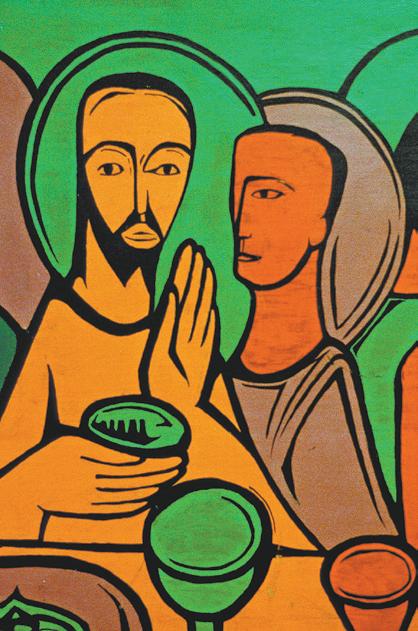



Meet ‘The Boss’ He’s coming to see you
Mitre

approximate20,000 number of books in Pope Benedict’s personal library.
1927

BENEDICT’S COAT OF ARMS
Moor’s head
The emblem of the Diocese of Freising, Bavaria, the Pope’s home state in Germany.
The keys The symbol of power that Christ gave to the first Pope, St Peter, and his apostolic successors.
Pallium







Unique to the Pope’s coat of arms, it stands for the responsibility of the flock entusted to him by Christ.


The simple mitre has three bands of gold to represent the powers of Orders, Jurisdiction and Magisterium (teaching authority).
Year in which Joseph Ratzinger was born


Brown bear According to legend, when St Corbinian, the first bishop and patron saint of the diocese of Freising, was on his way to Rome, a bear attacked and killed his horse. The saint tamed the bear and then made him carry his belongings the rest of the way to Rome.
Golden Scallop Shell
This recalls Pope Benedict XVI’s admiration of St Augustine who met a child on the beach who was trying to scoop up the sea into a hole in the sand. Augustine compared it to his own futile attempt to encompass the infinity of God within the confines of the human mind. The scallop shell also symbolises pilgrims.
Do you know... Pope Benedict XVI?

563
Number of holy people beatified by Pope Benedict
264
Number of Pontiffs who preceded Pope Benedict beginning with St Peter
14
Number of saints canonised during his pontificate
He’s coming to our fine Aussie shores in a few weeks time. Here’s some tidbits about the man we call ‘Papa’:
POPE Bendict XVI was born Joseph Alois Ratzinger at 8.30 am on April 16, 1927 in Marktl am Inn, Bavaria, Germany. He was baptised that same day. He is the third son of Joseph and Maria Ratzinger.

AS a child his family home was the living quarters of a barn with a leaking roof. He owned three toys. Yet he never felt deprived. He says his humble circumstances were a gift, helping him appreciate the simple and greater pleasures in life, like the love and affection of his family.
HE used to own a cat named Chico.
ASTRONOMERS have named an asteroid after him: Ratzinger 8661.
HE is fluent in German, English, Italian, French, Spanish and Latin. He can also read Ancient Greek and Biblical Hebrew.

AT 14 he was forced to enroll in the Hitler Youth but refused to attend their meetings. At 16 he was drafted into the German antiaircraft corps, but the blessing of an infected finger meant he could not shoot a gun. Instead, he was sent to work at the BMW factory that made aircraft engines. He later deserted. He was then put in an American POW camp but was released at the end of the War in 1945.


8
Number of trips Pope Benedict has taken outside Italy as pontiff
2
Number of encyclicals Pope Benedict has released so far.
By the way...
HE likes traditional Bavarian Christmas biscuits, chocolates and orange Fanta.
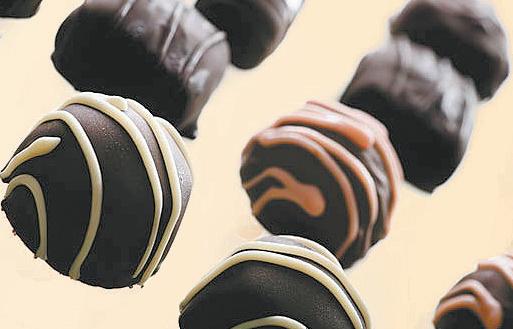
AT the age of 35, Father Ratzinger was a ‘pariti’ (advisor) at the Vatican II Council (1962-1965). He has reminded the Church that Vatican II’s goal was to ‘bring the faith out of the private sphere and renew it as the driving force of history.’ Thus, Vatican II was about discussing how the Church could influence, evangelise and sanctify the world. Vatican II’s call to update the Church was to be based on a return to Christ, a return to the sources of Christian wisdom and a deepening of the Church’s understanding of itself.
AS Cardinal Joseph Ratzinger he had a large following called The Ratzinger Fan Club, now the Pope Bendict XVI Fan Club www.popebenedictxvifanclub.com
AS the Prefect for the Congregation of the Doctrine of the Faith (19812005), Cardinal Ratzinger worked to stop abuses and clarify the Church’s teaching in areas of theology, liturgy, biblical scholarship, lay ministries, and inter-religious and ecumenical dialogue.


CARDINAL Ratzinger had hoped to retire and have free time to write books. When it became apparent that the Papal Conclave may elect him as Pope John Paul II’s successor, Pope Bendict XVI said: “I prayed ‘God please don’t do this to me’...Evidently, this time He didn’t listen to me.”
THE key theme of his pontificate is proclaiming a living relationship with Christ. At the centre of this relationship is the Eucharist.
YOU can email Pope Benedict at: benedictxvi@vatican.va


TO date, he has written over 40 books, over 40 journal articles, 1 Apostolic Letter and 2 encyclicals that have been translated into the English language…and he’s still writing.


HE plays the piano and enjoys Mozart’s Clarinet Quintet and Clarinet Concerto.

the BIGGEST and BEST secret most people DON’T know
Trees, whales, ocean environments, forests, habitats - even the food we eat. The whole world believes natural is best - except when it comes to the relationship between a man and a woman. Long dismissed or ridiculed by the media and lobby groups, proponents of Natural Family Planning have had a hard time getting a fair hearing on an issue that’s fundamentally important. And yet, as it turns out, what they are offering is the best news of all. This latest edition of the Committee for Family and for Life’s newsletter focuses on some of the unexpected - and still little-known - benefits of NFP.
Real sexuality education expands in Catholic schools
The need for Catholic Schools to teach young people counter-cultural truths about their bodies and the meaning and purpose of human relationships is fuelling ongoing demand for Family Life Education.
Family Life Education (FLE) is one arm of a suite of services offered by the Archdiocesan agency Natural Fertility Services.
FLE provides sexuality and relationship education services for a range of groups including schools, community groups and new mothers at St John’s hospital.
“Over the last couple of years we have seen a steadily increasing demand for our services from the Catholic Schools,” said Derek Boylen, Director of Natural Fertility Services.
“The Catholic education system does a great job of inviting students into the Church’s vision for sexuality and relationships through its curriculum in a variety of subject areas. In today’s society that’s challenging work.
“Wherever possible we try to support their efforts by providing trained educators to give students the latest information about their bodies and relationships.
“We want to present the Catholic Church’s message as an appealing and real option for their lives.”
The increasing demand for FLE services in schools saw NFS seeking applications for new educators in December last year.
This resulted in an explosion of new educaters - Jane Sawicki, Adele Plumridge, Alessandra D’Amico and Maria Antoniazzi, who have already have started training for the program.
“It takes a special kind of per-
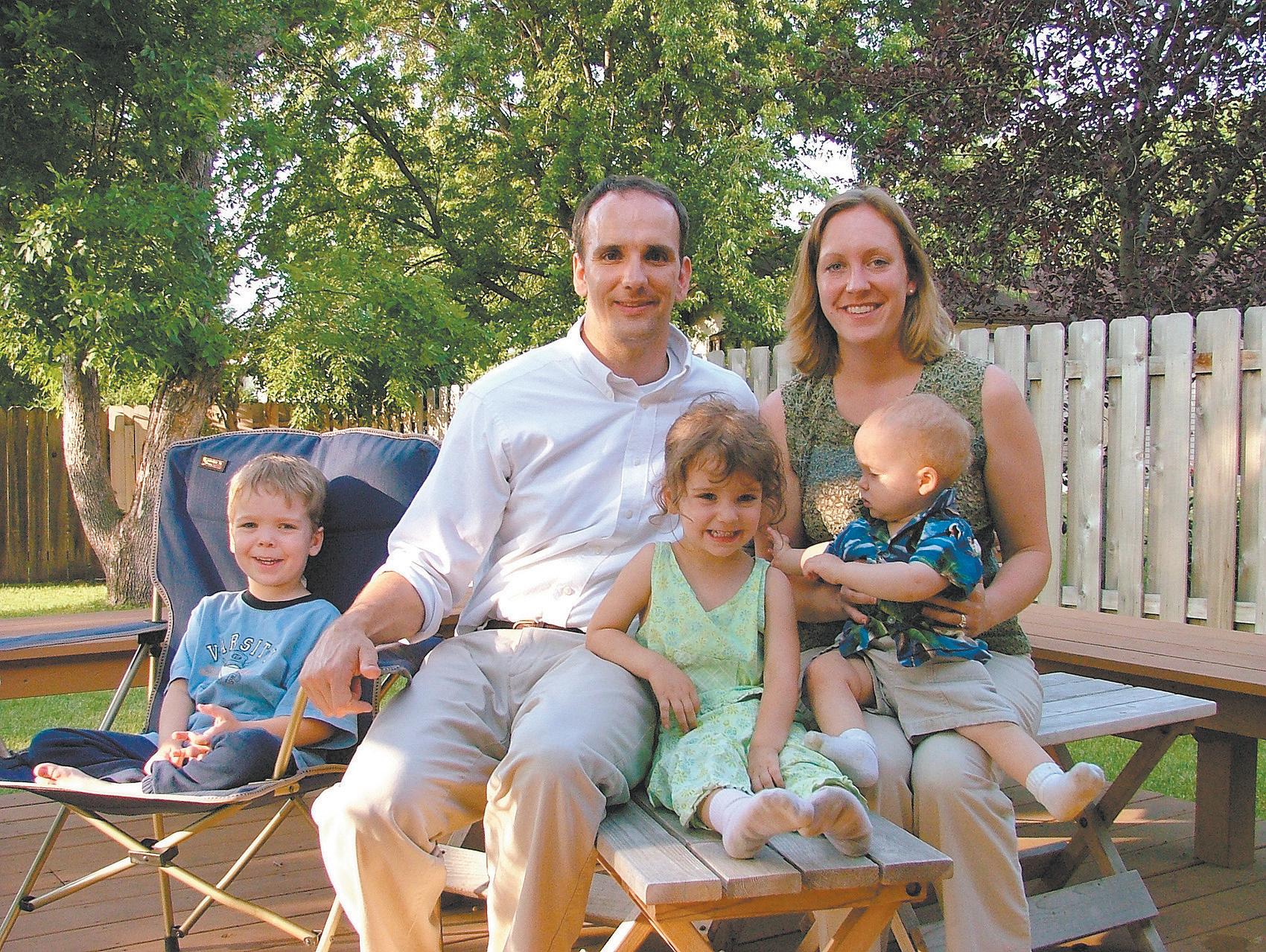
Let me tell you about the birds and the bees…
Among the many challenges a parent faces, one of the hardest must be the task of telling children about the ‘facts of life’. But for mother of six, Alessandra Mullaly, it’s as natural as, well... the birds and the bees.
Iam a happily married mother of six beautiful children ranging in age from nine to 22 years. They are Cassandra, 22, Patrick, 19, Christopher, 16, Lauren 12, Jeremy, 11 and Nathan, nine.
son to do this work and the training process is very comprehensive and rigorous,” teacher trainer Anne Raymond said.
The training process for new FLE staff includes in-depth coverage of areas such as sexuality, human relationships, reproduction, family planning, the psycho-social and spiritual development of young people and related theology (including the late Servant of God, John Paul II’s Theology of the Body), to name
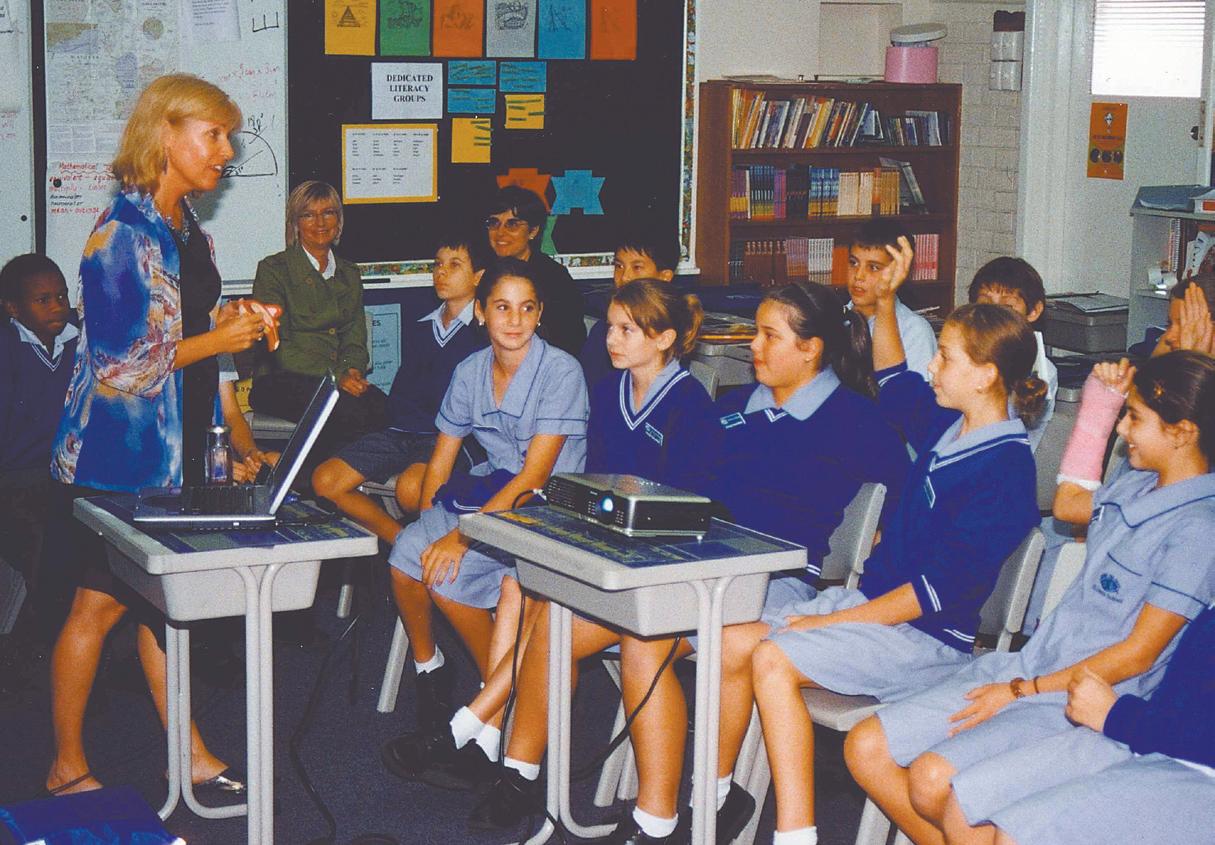
a few. “We hope our new educators will be out there connecting with students in the second semester this year,” said Mrs Raymond.
“It’s important work and it’s wonderful to see the demand for our services expanding at such a rate.”
NFS also carries out key work
CFFFL and discovery - why does The Record publish the CFFL newsletter?
in the diocese teaching couples the sympto-thermal method of natural family planning. For more information about Family Life Education programs or Natural Family Planning the agency can be contacted on (08) 9223 1396 or via email admin.nfs@aanet.com.au.
This is the third edition of the Committee for Family and for Life’s (CFFFL) Newsletter in 2008 published as part of this edition of discovery The Record and discovery are proud to promote the valuable works of the Committee as it works to resource young people and families, seeking to better equip them with the tools necessary to become strong, independent and mature contributors to the common good.
When my hus band, Patrick, and I first met, we asked each other the peren nial question: “How many chil dren do you want to have when you marry?”
 Allessandra Mullally
Allessandra Mullally
Surprise, surprise we both said at the same time: “SIX!” Well here we are all these years later and we are blessed with six healthy children. I probably started talking to the children about sex and sexuality when they were very young.
Certainly my older three remember me being pregnant and nursing their younger siblings. Along the way they have asked me how babies are made. I explain this in an age-appropriate way.
I always shared my sheer joy of carrying my precious babies and breastfeeding them. I always told them that God thought of everything and gave us the gift of our sexuality to procreate and share intimacy with the one special person that we marry.
I don’t recall taking them aside and explaining words ‘sex’ or ‘procreate’ with them as such. I guess I’ve always made them aware that our bodies are the temple of the
the JOYS of NFP (or - family planning au naturale)
Teacher Paul Kelly, 42, and his homemaker wife, Tracy, 35, are proud parents of four children aged two to nine – every one of them planned. Paul shares the joys of planned parenthood – the natural way.
Iremember having the privilege of hearing natural family planning pioneers, Drs John and Evelyn Billings, talk on NFP in 1992. What an amazing event. Here were two older people, both globally respected medical practitioners and researchers, happily married for decades, sharing their wisdom and experience about God’s plan for marriage and family. The happiness of their marriage shone out of them; I wanted that for mine too.
Interestingly, their talk coincided with a question my younger sister had asked me only the day before. Her doctor wanted to put her on the pill because her acne medication could apparently cause birth defects in any child she might conceive whilst on the acne drug. Even though she was not sexually active, she wanted to know what I thought.
But after hearing the Billings, I began researching the issue and discovered that the pill has some little-

known side effects and has been scientifically linked with cervical and breast cancer and thrombosis. Then I discovered its potentially abortifacient nature. I didn’t want that for either my sister, or my future wife. Part of my problem with the Pill is that it lays all responsibility for
family planning (and all its attendant side-effects) on the woman. In a very real sense, the man gets off scot-free, with a woman who is constantly sexually available to him. That’s not fair.
But how realistic is NFP? I recall John Billings sharing an experience
in one of the many Third World countries he and Evelyn had visited. Picture the scene: John is in a mud hut talking to the chief of the village and the men. Evelyn is next door, explaining their now-famous NFP method to the women; she’s telling them about putting a specific col-
Introducing birds & bees? No dramas
Continued from Page 11
Holy Spirit and therefore we should care for them.
I have always been open with my chldren about the natural rythms of the female body and how it works, and to help my children understand that this is beautiful, not dirty or distasteful.
I also have to instill in them an awareness of the sensitivity required in regards to the female body.. I always respond that if that were the case I would be so anaemic that I would never be able to get out of bed! My hus band and I always practise natural fertil ity awareness. This has brought us clos er, as he is always in tune with my cycle.
We live in a society which exposes us to so much sex without context everywhere we look and read. It is always in our face. We can’t escape it.
However we can teach our children to be discerning. Yes, it is normal to have feelings for the opposite sex. That does not mean we have to act on them all the time. I have always encouraged them to go out in groups instead of one on one.

The reality is that as parents we can’t be with our children ‘24-7.’ However, children not only hear what we say, but watch what
we do. How my husband and I show affection and respect for one another is an example which we set for the children.
Alessandra Mullally is a primary school teacher, marriage educator with Catholic Marriage Education Services and family
our of flower in their hair to denote fertility, and a different colour for infertility and teaching them how to recognise the fertile and infertile periods in their menstrual cycles.
Meanwhile, John is standing before the chief and the other men of the village. explaining the abstinence required if they are planning to postpone pregnancy. John is repeating the abstinence part for about the third time, when the chief interrupts him: “We’re not pigs” he said. “We heard you the first time!”
John shared how struck he was at his own prejudice and his implied low opinion of men who were every bit as human as he. I think if men are given a challenge of this kind, they are equal to it. I just don’t think today’s men are being challenged. Today, from an early age, young men and women are being told they need no self-control, so contraception such as condoms (with a recognised failure rate for sexually transmitted diseases and pregnancy), and the pill are the only apparent options. What a shame. What a low opinion of the human person. “But they’re going to have sex anyway,” I often hear. Well, sadly, they’re going to end up with HPV and herpes and an unwanted pregnancy anyway.
And they do. There has to be a better way and there is. NFP works. 13 years of happy marriage and four
Continued on Page 13
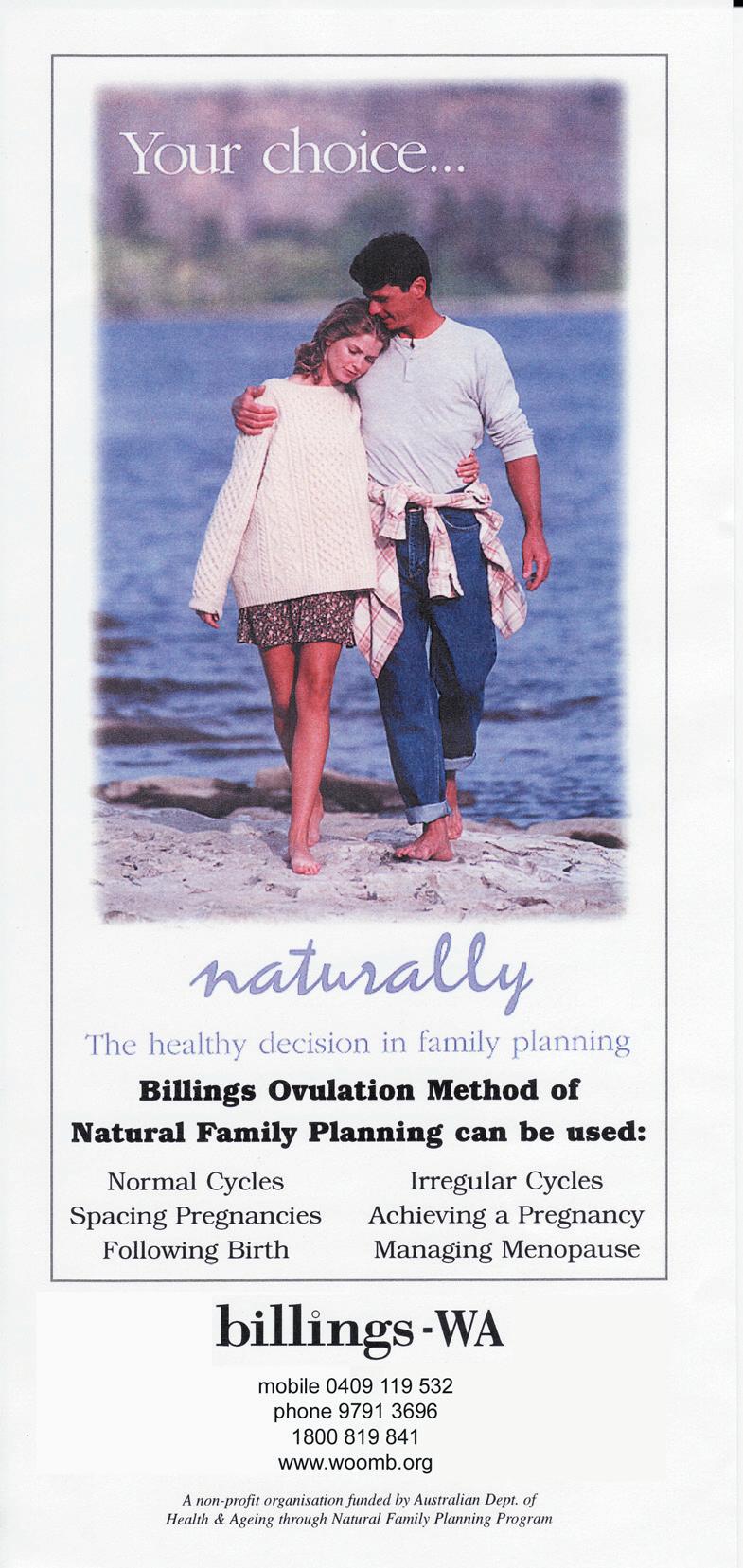
COMMITTEE FOR FAMILY AND FOR LIFE
Shock! Horror! Chastity by CHOICE?
Women’s and men’s magazines would be scandalised. To save love for marriage requires true courage, considering the way the media bombards us with the opposite message. But meet two people who have done just that...
Wnot a loving thing to do because you risk putting the other through emotional or spiritual hurt.
This statement, made with firm conviction by young married cou ple Christine and Jason Giuffre, sums up the attitude that made their decision to wait until marriage a joy. “Our relationship is so much month courtship and engagement chastity began before they met,


when they were introduced to True Love Waits, a movement of young people who promote chastity and saving the gift of sex for marriage.
Both became team members of “TLW Catholic WA” in 2004, helping to organise and deliver TLW ‘open sessions’, presentations to school and church groups.
Said Christine: “Being surrounded by many inspiring young Catholics committed to chastity and selfless love made me realise ‘waiting until marriage’, although sometimes difficult, was entirely possible.
Jason’s decision to wait stemmed from values he was brought up with, and being surrounded by likeminded people who helped him to live that decision.
“Being TLW team members meant we had nothing but support in upholding these values. We all became great friends who grew together in faith, and supported each other through prayer, companionship and abundant filial love. We have and still do share so much joy and laughter with the special friends we made through TLW,”
he said. “TLW taught us so much: what authentic love really is, how sexuality is such a beautiful gift and how it reflects the love of Christ.
“We didn’t want to use our own or each other’s bodies for pleasure alone. Rather, we wanted to use our bodies to lead each other to God.”
After two years, their friendship blossomed into love “almost overnight”. During their engagement they were always pleasantly surprised by the reaction of those who learnt they were waiting till marriage.
Said Christine: “Most people were initially in utter disbeliefwhich was sometimes quite funny - but all showed great respect and admiration for our commitment.”
The couple married 18 months ago and embraced the Creighton Model of NFP they had learnt together during their engagement.
They are now proud parents of five-month old Jacinta and credit Natural Family Planning with fostering “communication and other expressions of intimacy” in their marriage.
Billings’ pioneering work gave us joy - and built a family
Empowering every woman
The Billings Ovulation Method, pioneered and developed by Dr John Billings with his wife Dr Evelyn Billings in the 1950s, is a still little-known but groundbreaking system that helps women to identify their fertile and non-fertile states based on their menstrual cycle.
It can be used as a means of natural family planning that :
· DOES NOT require any form of rhythm counting, drugs or devices.
· ENABLES couples to share the responsibility for planning their family, thereby enhancing their relationship.
· RELIEVES concern about the effects of chemical contraceptives on health.
· has GREAT SUCCESS in helping couples achieve a pregnancy where their fertility may have been in doubt.
· IS BASED ON the symptoms of a woman’s fertility and infertility.
· GIVES EVERY WOMAN her right to know and understand her fertility and reproductive health.
For more information on the Billings
Ovulation Method (BOM), contact the Ovulation Method Research and Reference Centre of Australia Ltd, a nonprofit organisation undertaking research into fertility and infertility awareness that receives Commonwealth funding for training and accreditation of teachers of BOM:
Billings LIFE
4B,303 Burwood Hwy, East Burwood VIC 3151,
Phone: National (03) 9802 2022
Continued from Page 12
children later, my wife and I can safely say there is a viable alternative. Our children are nine, seven, five and two. It looks to some that they are all planned, and they are - everyone. Some see us with four kids and immediately think there’s no self-control. Nothing could be further from the truth. Some saw us with three, when we only had three, and assumed some were ‘mistakes.’ But no, no mistakes. All planned. Godly order. Team work. Both responsible. Both equally involved in the planning. Awesome. If God had wanted every act of sex to result in a baby He would have made the woman constantly fertile, but He didn’t. Instead God gave us the capacity to see the natural patterns in human sexuality and the freedom to choose self-control for love of one’s spouse and children. Because
of NFP, mum doesn’t need to worry about the next ‘crisis’ pregnancy; we’re in control, a control that God gave us.
That’s especially providential for my wife, Tracy because she suffers from hyperemesis (nausea and vomiting for the nine months of her pregnancies, with periodic visits to hospital for re-hydration). Too much of a good thing sours all of us, but with the Billings Method, the marital embrace, the unspoken renewal of our marriage vows, is never sour, never routine. Instruction by a qualified teacher is essential. NFP often gets a bad reputation because of a lack of proper instruction.
And one last thing. We are an ordinary couple. We’ve just listened to the good advice of extraordinary people who have gone before us, and we’ve put that advice into action. Why not you too? Come and share in our joy.
· IS APPLICABLE from puberty to menopause, in times of breastfeeding, post hormonal medication and approaching menopause. It can be used to achieve or avoid pregnancy. Cycles do not have to be regular.


Free call (Australia wide)
1 800 335 860
WA: 1800 819 841 or 0409 119 532
Or check out the reference site of the World Organisation of the Ovulation Method Billings - www.woomb.org









Natural Family Planning





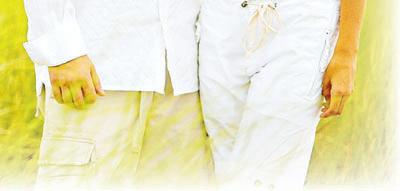

Books for all the family from The Record!


PIERCED BY A SWORD
By Bud Macfarlane







The man who created Narnia with limitless imagination
Michael Coren, an expert in the life and writings of CS Lewis, presents an engrossing biography for young people and adults of the man who created Narnia. This biography, lavishly illustrated with numerous photos from the life of Lewis, is written in a captivating style that will appeal to all ages, youth and adults alike. Starting with the “Beginnings,” Coren tells the fascinating details of Lewis’s childhood and youth, one that was, in Lewis’s words “full of long corridors, attics explored in solitude, sunlit rooms and endless books.”
It continues with his studies at Oxford, subsequent celebrated teaching career, friendships with great writers like JRR Tolkien, Charles Williams, GK Chesterton and George Sayer, and his meeting and marriage to Joy Davidman and how he dealt with the sorrow of her death. Michael Coren is a well-known radio and television broadcaster in Toronto, as well as a syndicated columnist.
This supernatural thriller intertwines the lives of an unforgettable assortment of characters that are so real you will find yourself thinking about them even when you put the book down. Revolving around visions and messages from the Virgin Mary, this distinctively Catholic novel will take you on a fast-paced journey of cosmic proportions.
$7.95 + postage




$29.90+ postage
THE CHRONICLES OF NARNIA COMPLETE 7 VOLUME BOX SET
By C.S. LewisC.S. Lewis allegorical children’s masterpiece, The Chronicles of Narnia, tells the tales of children who travel to the world of Narnia, in which they meet the lion, Aslan, the King of Narnia, discover who they are, and learn about the battle of good versus evil, and the virtues of faith and hope. A beautiful gift for children and adults alike!
Complete 7 Volume Set $45.95+postage
HOUSE OF GOLD
By Bud MacfarlaneMacfarlane provides the reader with a gripping spiritual odyssey that deals with life and death, good and evil, courage and suffering. This apocalyptic adventure will take you on an exciting but challenging journey that will make you think twice about where the world is heading. It will reverberate through your soul long after you turn the last page.
$7.95 + postage
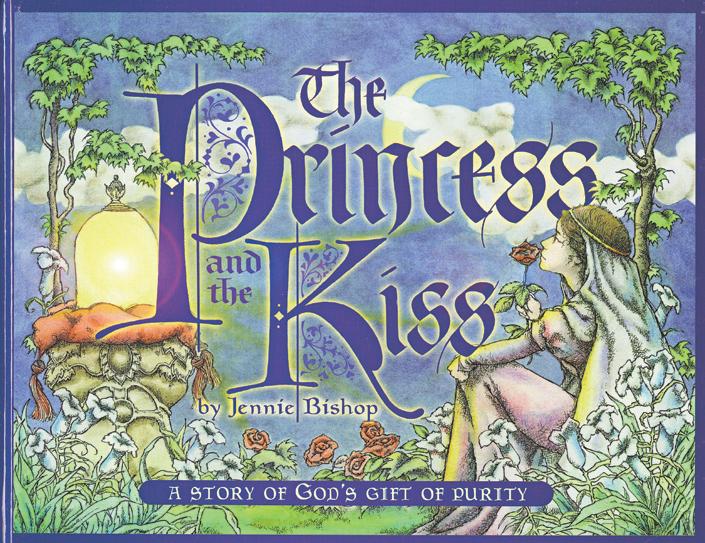
EDITOR
Peter Rosengren cathrec@iinet.net.au
JOURNALISTS
Anthony Barich abarich@therecord.com.au
Paul Gray cathrec@iinet.net.au
Mark Reidy reidyrec@iinet.net.au

CONCEIVED WITHOUT SIN
By Bud MacfarlaneA story of love, marriage, friendship and conversion weaves itself effortlessly into the supernatural dimensions of this riveting faith-building novel. Says Catholic author Michael Brown, “It explores the hidden battles in the war that is waged over every soul. It’s a great read, and I believe it will change the lives of many, many readers.”
$7.95 + postage
THE PRINCESS AND THE KISS
By Jennie Bishop“I asked God how I could teach my young daughters the value of their purity, how I could begin in their early years to stress the importance and beauty of saving themselves for marriage. This is God’s poignant answer. My prayer is that this simple story will fulfil the same purpose for many other loving parents.”
$22.95+postage
ADMINISTRATION
Bibiana Kwaramba administration@therecord.com.au
ACCOUNTS
Cathy Baguley recaccounts@iinet.net.au
PRODUCTION & ADVERTISING
Justine Stevens production@therecord.com.au
CONTRIBUTORS
Joanna Lawson
Debbie Warrier
Karen & Derek Boylen
Anna Krohn
Catherine Parish
Fr Flader
John Heard
Mid Year Applications
Notre Dame is now accepting mid-year applications.
If you have been thinking about going to University or just feel like a career change, now is the time to do something about it! It is also a great opportunity for those students who are completing studies at TAFE or anyone who is not completely satisfied with their current course to come and experience what Notre Dame has to offer with the smaller class sizes and personal approach to teaching.
Semester Two commences Monday July 28.
World Youth Day Update
Calling all Year 10, 11 and 12 students
A Day in the Life of a University Student – Friday 11 July – 9am to 2pm
This is a FREE event specifically designed for students in years 10, 11 and 12 to find out for themselves what it is like to be a university student. Students will take part in some of the activities that university students involve themselves in, hear from current students about the transition from high school to university and attend two mini-lectures.
Lectures from last year included:
•Digital Driving in your Virtual Car
•Harry Potter meets Dracula
•Nursing - An Art and a Science
•Surfing the Coast: Waves, Tides and Landforms
•How To Make Your First $1 Million – And Help Save the Planet
•OJ Simpson meets Shapelle Corby A sausage sizzle wraps up the day.
RSVP now for this great opportunity! Call the Prospective Student Office on 9433 0533 or register at future@nd.edu.au

Notre Dame wants to thank all the students from high schools who participated in Notre Dame’s World Youth Day photo exhibition. The exhibition displayed some outstanding photos of what the Cross means to youth today. For more information on this and Notre Dame’s involvement in the arrival of the Cross to Western Australia, please see the next edition of The Record.

Fremantle Campus Open Day – Sunday 17 August – 10am to 4pm Mouat Street, Fremantle
Enjoy the Notre Dame experience for yourself at our annual Open Day on Sunday 17 August from 10am to 4pm. Explore the campus, see what we have to offer and meet our staff and students.
Activities on the day include:
•Course information sessions •Interactive demonstrations
•Campus tours every half hour •BBQ with current ND students
•PLUS course expo with teaching staff available to discuss course details with individual students.

Course Information Evenings
Course Date Venue
Business & Law
Accounting, Economics, Finance, Human Resource Management, Management, Marketing & Public Realtions.
Tuesday 24 JuneND1/103, 19 Mouat Street, Fremantle
Undergraduate 4 year Law, Graduate 3 year Law
Philosophy, Theology & Ethics
Arts & Sciences
Admissions Information
Monday 30 JuneND1/103, 19 Mouat Street, Fremantle
Tuesday 1 July ND1/103, 19 Mouat Street, Fremantle
Tuesday 2 SeptemberFoley Hall, 19 Mouat Street, Fremantle & Courses Expo
Course Update
Business at Notre Dame
I believe that the quality of the Education that I have received from Notre Dame is second to none. Many of the business school lecturers are still practicing in their profession of expertise and are able to teach the most relevant material in a very practical context. Having reached the end of my degree I now feel I have the skills to confidently work in my profession.
The Notre Dame campus is extremely unique, the buildings and surrounds are rich in history and character. The Fremantle community has embraced Notre Dame students and these two factors combined make being at university an absolute pleasure.
I believe that the quality of the education that I have received from Notre Dame is second to none.”
